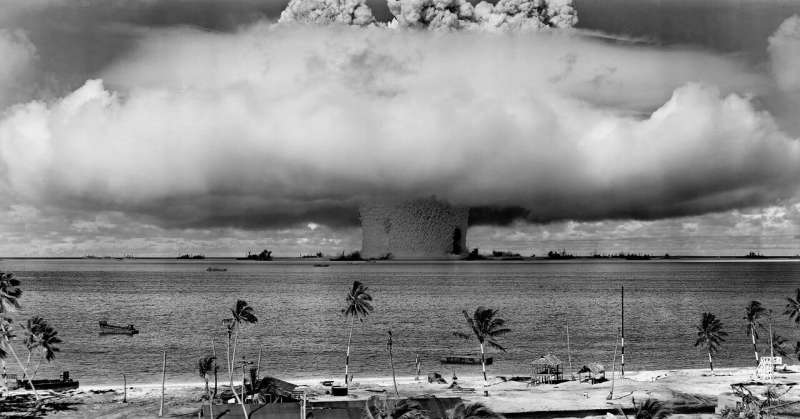New map for radioactive soil contamination in Western Europe

An international consortium of scientists has refined the map of cesium and plutonium radionuclide concentrations in soils in Switzerland and several neighboring countries. Using an archive of European soil samples, the team led by Katrin Meusburger from the University of Basel, now at the WSL research institute, was able to trace the sources of radioactive fallout between 1960 and 2009. This study was published in Scientific Reports.
The new map comprises Switzerland as well as several neighboring countries (France, Italy, Germany, Belgium). It is based on a new calculation method, namely the use of the cesium/plutonium ratio. These two radionuclides were released during military nuclear tests, particularly in the 1960s, but cesium also during the Chernobyl accident in 1986.
"We have created a new map to provide a basis for estimating the soil loss since the anthropogenic release of radionuclides," says first author Katrin Meusburger from the group Environmental Geocience at the University of Basel, who is now working at the Swiss Federal Institute for Forest, Snow and Landscape Research WSL. "To do this, it is important to know the proportion of radioactive fallout from Chernobyl."
The data collected, made available to the scientific community and the public, are useful for establishing a reference base in the event of possible future fallout of radionuclides, but also for use in new studies, particularly in geomorphology. They will, for example, allow the reconstruction of soil erosion rates since the 1960s in areas of Europe where there have been major landscape changes.
Higher accuracy and resolution
The consortium researchers used 160 samples from a European soil sample bank from 2009. These samples were taken from soils under grassland, which have remained stable since the 1960s (absence of erosion and accumulation) and are representative of the variability of rainfall conditions observed in the countries covered by the study.
The radionuclides found in these samples, cesium and plutonium (137Cs, 239Pu, 240Pu), left a specific footprint in European soils. Indeed, in the countries covered by the study, the plutonium came exclusively from the nuclear tests. As for cesium, it is the result of both nuclear tests, particularly in the 1960s, and the 1986 Chernobyl accident. The relationship between cesium and plutonium is therefore different depending on whether it comes from nuclear tests or from the Chernobyl accident. It is this relationship that has enabled researchers to trace the origin of these artificial radionuclides deposited on European soils. "Unlike with the previous map, we can now distinguish between the sources of nuclear fallout," says Meusburger.
The study concludes that the cesium resulting from the nuclear tests—carried out in the stratosphere, i.e. at high altitude—circulated in the atmosphere before being brought down to the ground by the rains in a fairly homogeneous manner but with a slightly higher amounts in the rainiest regions, such as the Massif Central, the Ardennes or Brittany. On the other hand, the cesium released during the Chernobyl accident did not reach such altitudes; it remained at tropospheric level. The scattered rains that occurred in late April/early May 1986 quickly brought it back to the ground in areas where the plume from Ukraine had circulated. The spatial distribution of radioactive fallout is thus much more heterogeneous, with locally higher concentrations in Alsace, Franche-Comté and the foothills of the Alps, northern Italy and southern Germany.
More information: Katrin Meusburger et al. Plutonium aided reconstruction of caesium atmospheric fallout in European topsoils, Scientific Reports (2020). DOI: 10.1038/s41598-020-68736-2
Journal information: Scientific Reports
Provided by University of Basel




















